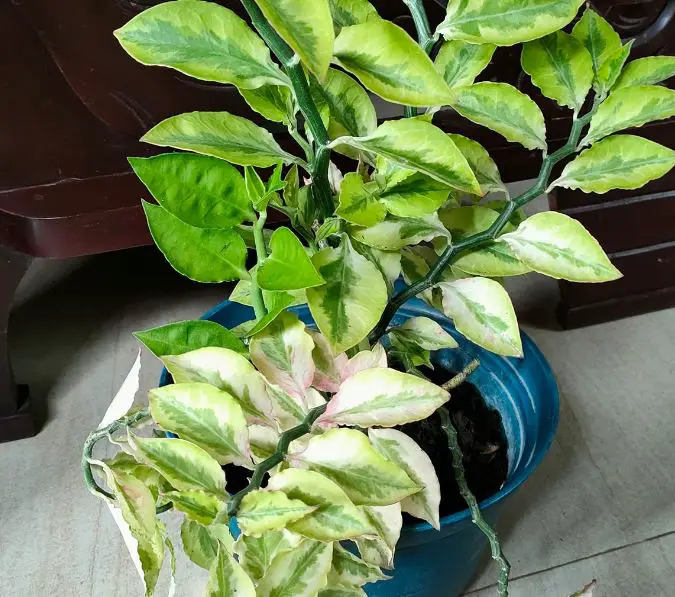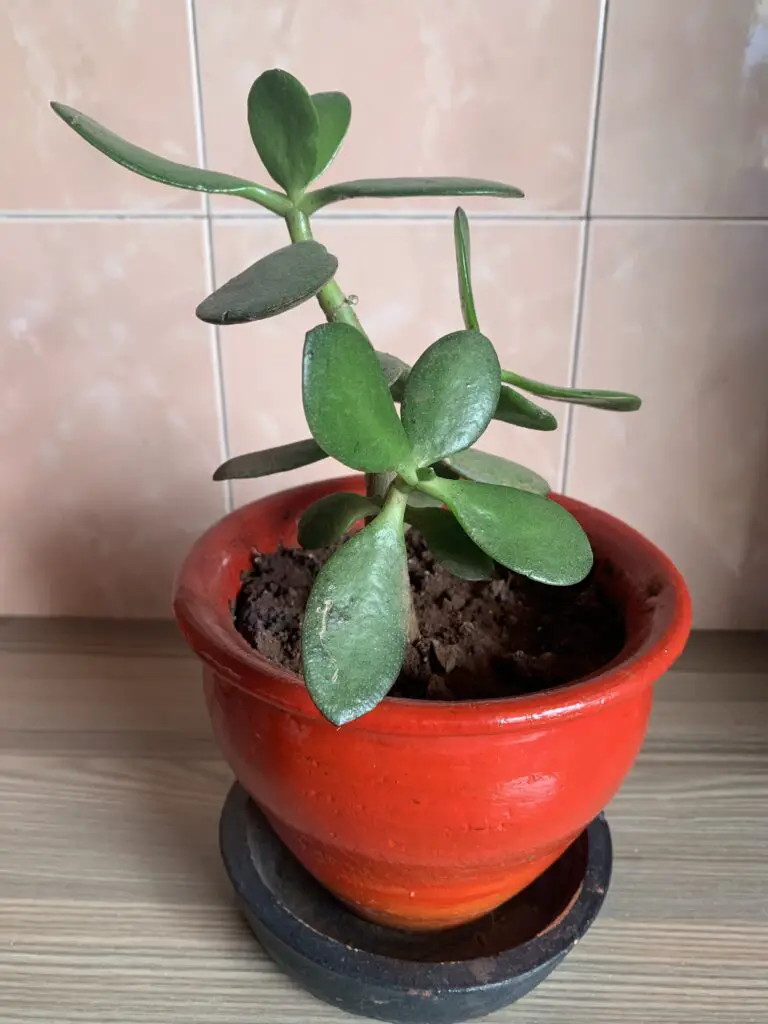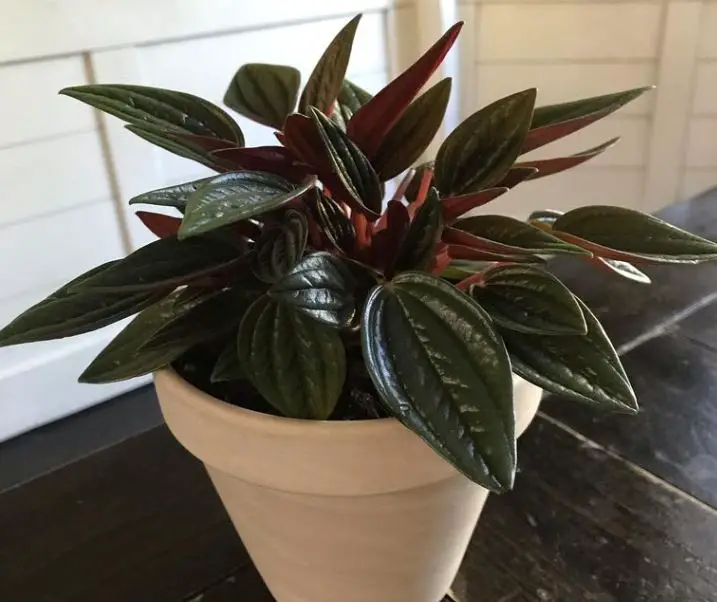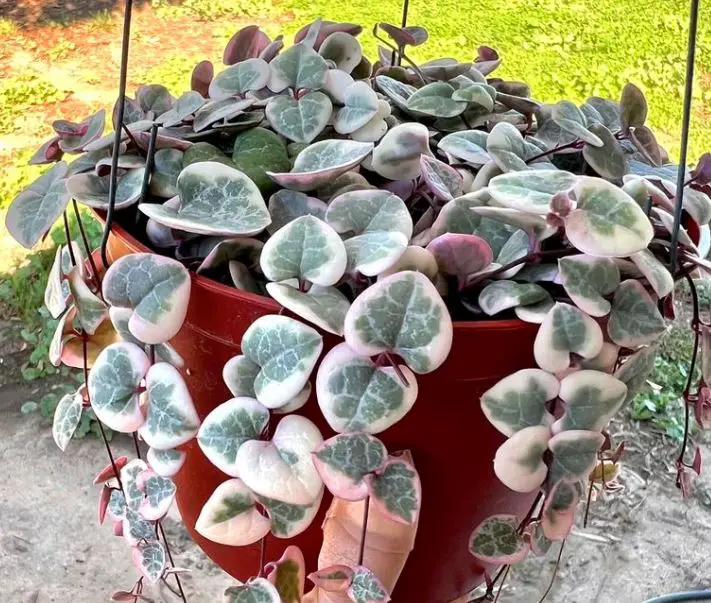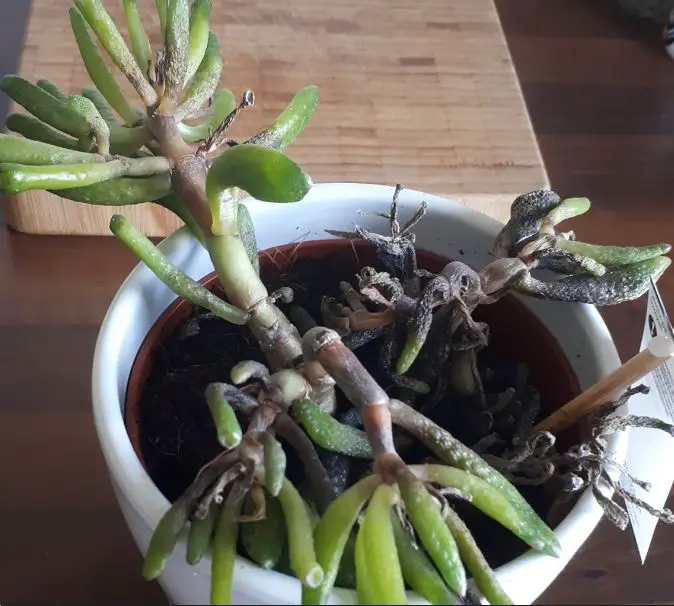String of Bananas Succulent Care: Growing and Propagation Guide
String of bananas (Senecio radicans) is a trailing plant with leaves looking like bananas. It’s actually one of the fastest-growing succulents that is also easy to care for. If you have unsuccessfully tried to care for a string of pearls, this one will not disappoint.
Native to Cape province of South Africa, the string of bananas is well-adapted to hot dry conditions. Therefore, it can be grown outdoors year-round in warm tropical areas or indoors in areas with cold climates. Freezing temperatures, below 32 degrees Fahrenheit can kill the plant.
Like most succulents, Senecio radicans is grown for its unique foliage color and shape rather than its blooms which are not showy. It makes an interesting addition to any houseplant collection and can be trained to grow upwards on a trellis or cascade downwards from a hanging basket.
Before, we look at how to grow and care for string of bananas plant, let’s understand what this succulent is all about.
| Botanical name | Senecio radicans |
| Common name | String of bananas |
| Sunlight exposure | 24 – 36 inches long |
| Sunlight exposure | Full sun to partial shade |
| Soil type | Well-draininng, pH 6.6-7.5 |
| Blooming | Spring, Small white flowers |
| Toxicity | Toxic to humans and pets |
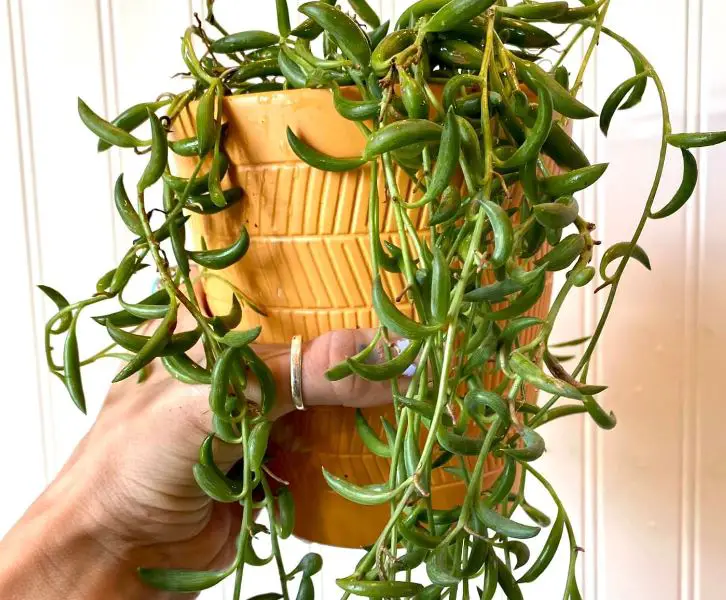
String of bananas plant care
String of bananas are typically hardy and easy to grow. They make a great start-off point for beginners and novice gardeners. When growing them as houseplants, there is no need for frequent watering, fertilizing, or repotting. Here’s what the plant needs to thrive.
Light
Light is one of the most important requirements for growing a string of banana plants. They’ll need plenty of sunlight when growing indoors. So, choose a location that receives at least five hours of sunlight per day. You may also add artificial grow lights if the room is not receiving enough natural light.
The string of bananas is likely to become leggy if it’s not receiving enough light. The etiolated plant may also lose leaves and become pale if darkness conditions persist. Light is essential for the manufacture of sugars and chlorophyll in green plants. So, without it, the plants can’t survive.
Watering
Even though the string of bananas is considered drought-tolerant, watering is essential for plant growth. When watering these trailing succulents ensure the soil is completely dry between your sessions. Overwatering can prevent roots from getting enough oxygen resulting in root rot.
Since the string of bananas is prone to root rot, it’s better to keep the soil on the drier side than overwatering. You can also prevent this problem by planting your succulent in well-drained soil and a pot with adequate drainage holes.
Soil type
Soil is an important growth media for any plant. However, not any type of soil can work for succulents including the string of bananas. When potting or repotting, use well-draining soil preferably premixed cactus or succulent soil.
You can also make your own succulent soil by mixing 2 parts potting soil, 1 part perlite, and 1 part pumice or sand. The aim is to improve drainage which cannot be achieved by only using the standard potting soil. The soil pH should range between 6.6 and 7.5 for optimum growth.
Temperature and Humidity
String of bananas are super hardy in hot conditions. They can handle temperatures up to 110 degrees Fahrenheit. However, they often do well in normal household temperatures and humidity levels. Move your plants indoors when temperatures outside get below 30 degrees Fahrenheit.
While inside, ensure that your succulent is kept away from heat or air conditioning vents and drafty windows. The plant can get stressed when exposed to sharply fluctuating temperatures. Don’t mist the string of bananas or place it in the bathroom when the air indoors gets dry.
Repotting
Unlike most succulents, the string of bananas does not need to be repotted regularly. However, you might need to refresh the soil every 3 to 5 years. This will replenish nutrients and give the plant more room for growth. When repotting, use well-draining soil and a slightly bigger pot.
Spring and summer months are the best for a repotting string of bananas. This is when the succulent actively grows which is good for a faster root recovery. However, you should be gentle when repotting to avoid breaking any of the delicate stems.
Pruning
Although a string of bananas is a fast-growing succulent you don’t need to prune it more often. You can train the vines to grow upwards a trellis or direct it where you want. Pruning can be necessary if you want more growth. You can use the cuttings to propagate a string of bananas.
Fertilizing
String of bananas are not heavy feeders, as such, they don’t require regular fertilizing. However, to boost growth, you can fertilize with half-strength liquid houseplant fertilizer during spring and summer. Worm-casting tea and other organic fertilizers are also recommended.
Note: String of bananas succulent is toxic to dogs, cats, and humans particularly when ingested. Individuals with allergies may experience skin irritation upon contact with the plant. Other symptoms of poisoning may include vomiting and diarrhea. So keep this plant out of reach of pets and children.
How to propagate string of bananas
The string of bananas can be propagated to get more plants that you can share or add to your collection. It’s generally a simple process that involves the following:
- Choose a healthy and mature stem on your string of bananas plant.
- Cut a portion of the stem about 10 to 15 inches long with a sharp, clean pair of scissors or a knife.
- Let the cutting callous over for a day or two to prevent the cut end from rotting.
- Put the cutting in the soil or simply lay it on the soil and mist it. Do not overwater the cuttings, ensure the soil dries up between waterings.
- Place the cutting in a place with bright indirect light. Sometimes covering the cutting with a plastic dome helps in preventing water loss hence faster growth of the roots.
- Be patient as you wait for roots to grow. It may take a few weeks to a month.
You can also choose to propagate a string of bananas in water. Instead of putting the cutting in soil, just suspend it in a container with water. I recommend removing the leaves on the bottom section of the stem before inserting them in water. Changing the water regularly can also increase the chances of success.
Propagating a string of bananas in water only gives you an opportunity to see roots as they grow. You’ll need to transfer the cutting into well-draining soil when the roots are long and mature enough.
Common problems with string of bananas plant
Although growing and caring for Senecio radicans is relatively easy, these plants can be susceptible to common household problems including the following:
Root rot
Root rot is a common problem in overwatered plants. Root fungal infections and poor supply of oxygen around the roots are the main causes. Rapidly wilting leaves, plant drooping, plant turning yellow, and rotten base are some of the symptoms of root rot in a string of banana plants.
If you suspect root rot, take the plant out of the pot and inspect the roots. If they are not damaged, just stop watering and let the soil dry completely before watering again. If the roots are brown and mushy, remove the damaged parts and repot the succulent in a fresh soil mix.
Insect pets
Most insect pests feed by sucking sap and this can weaken the plant or transmit infections.
Inspect your string of bananas for pests such as mealybugs, aphids, and spider mites, and treat them before it’s too late. You can use neem oil or insecticidal soap for early control.
Leaves falling off
Bananas falling off your succulent is commonly a sign of distress as a result of poor drainage, lack of nutrients, and underwatering. Mishandling the plant during transplanting or relocation can also cause leaves to drop. It’s important to establish the exact cause and find a solution.
Final Thought
Growing and caring for a string of banana succulents is relatively easy. As with most succulents, they need adequate light, well-draining soil, and infrequent watering to remain healthy. Propagating these plants is also a straightforward process with the use of stem cuttings.
The best place to grow Senecio radicans is in a hanging basket or near a trellis where you can train it to grow upwards. If you are growing it indoors, place it near East or North facing windows where light is maximum. Allow the soil to dry between watering and inspect the plant regularly for pests and other issues.
My name is Diane M Lewik, and I am the founder of this website. I am a degree holder in plant biology from the University of California – Berkeley. Over years, I have cultivated a vast collection of succulents and I have learned a great deal about how to grow and care for these unique plants.

